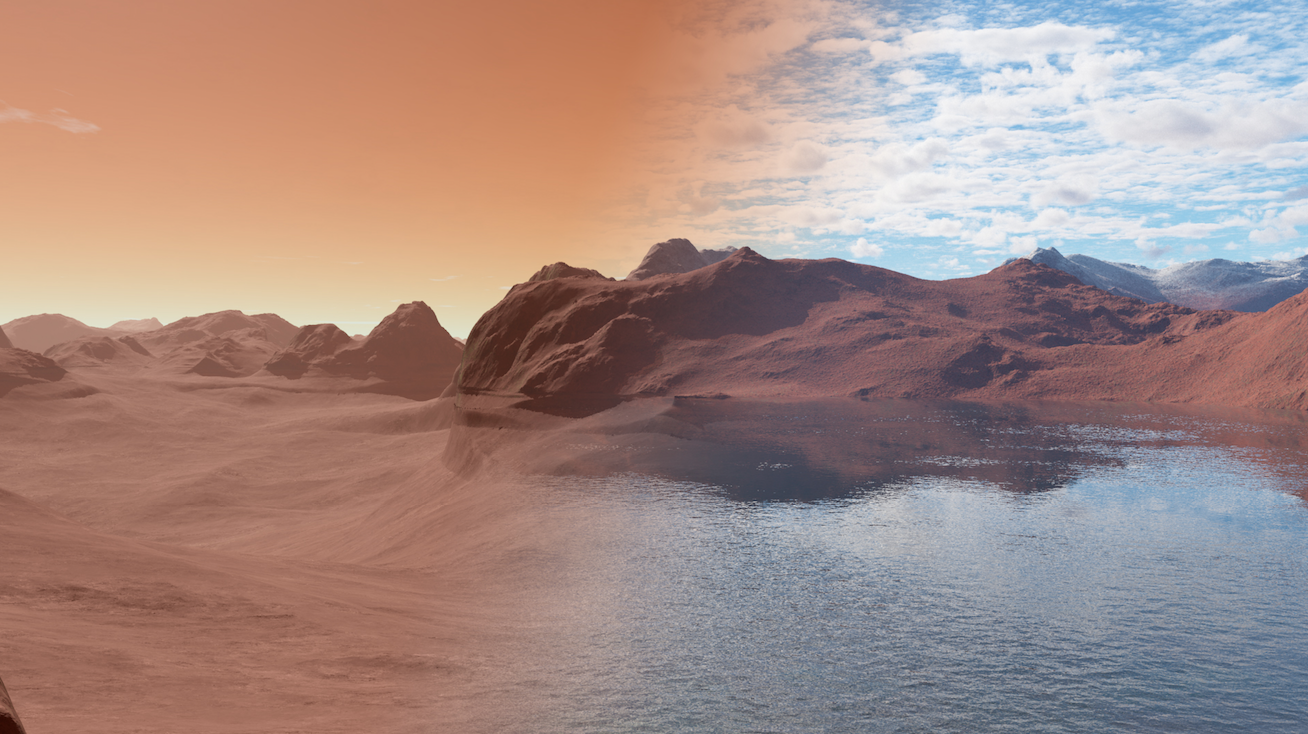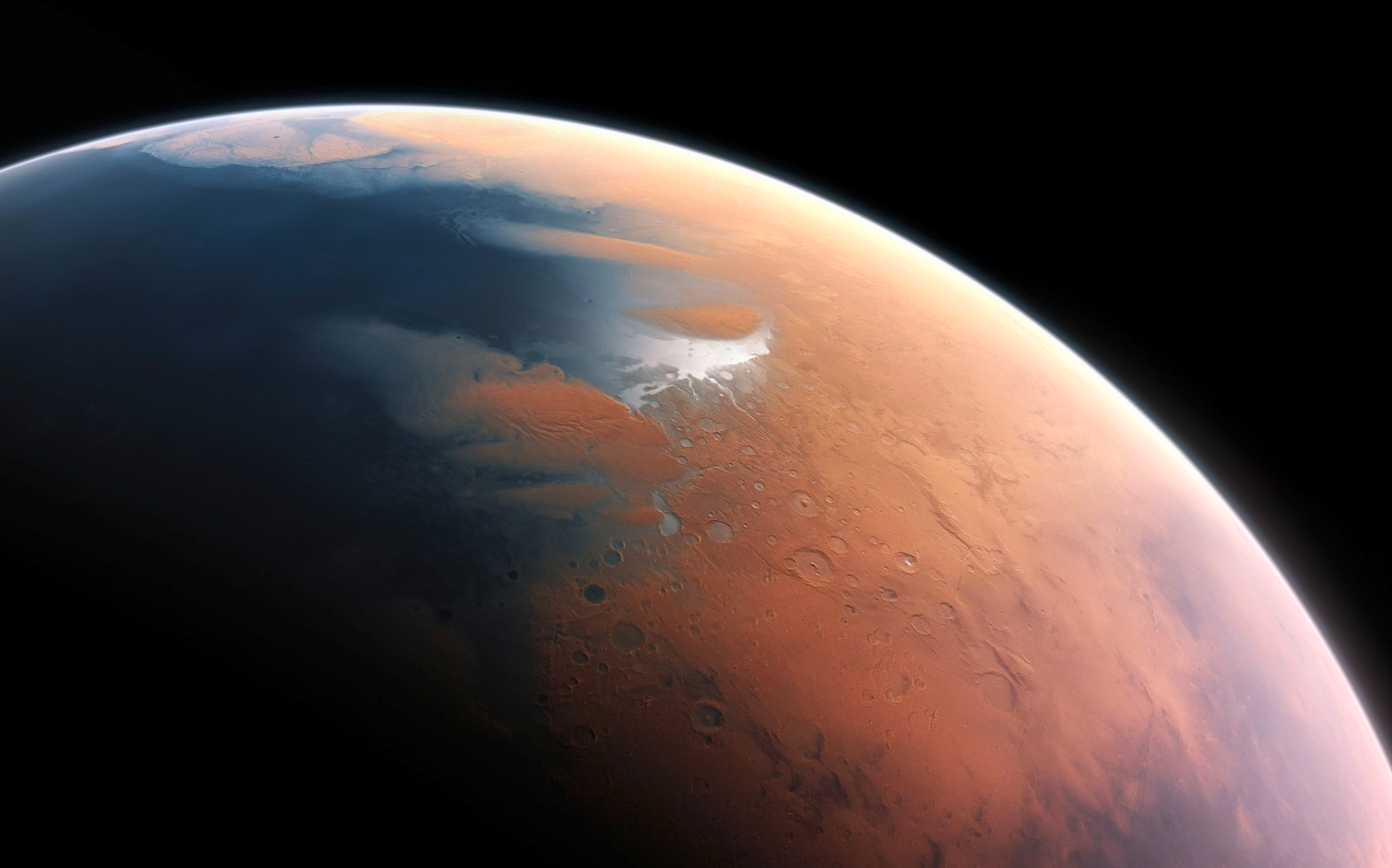When searching for life, scientists begin by looking for the key element that sustains it: fresh water.

Although today’s Martian surface is barren, frozen and inhospitable, a trail of evidence points to a once warmer, wetter planet, where water flowed freely. The mystery of what happened to this water is long-standing and unsolved.
However, our new research, published on 21 December in Nature, suggests that this water is now locked in Martian rocks.
A globe-spanning team of scientists from five institutions including Oxford University and the Earth Observatory of Singapore, propose that rocks on the Martian surface interacted with the water that was once there, forming hydrated crusts on the surface of the planet. This led to the absorption of the water by the rocks and the oxidation of the upper part of the Martian crust, ultimately leaving the planet uninhabitable.
Previous research suggested that the majority of Mars’ water was lost to space as a result of the collapse of the planet’s magnetic field, when it was either swept away by high intensity solar winds or locked up as sub-surface ice. However, these theories do not explain where all of the water went.

Convinced that the planet’s mineralogy held the answer to this puzzling question, our interdisciplinary team used modelling to understand the composition of rocks on Earth and Mars.
From this, we were able to calculate how much water could be removed from the Martian surface through reactions with rocks. The team assessed the influence that rock temperature, sub-surface pressure, and the general make-up of the planet have on Mars’ surfaces.
Our study revealed that the basalt rocks on Mars can hold approximately 25 per cent more water than those on Earth, and that they can store this water at a much greater depth. This suggests that these basalt rocks drew the water from Mars’ surface into its interior.
People have thought about the question of where the water on Mars went for a long time. But no one had ever tested the theory that the water could have been absorbed as a result of simple rock reactions.
The Earth’s current system of plate tectonics prevents drastic changes in surface water levels, as wet rocks efficiently dehydrate before entering the Earth’s relatively dry mantle. But neither early Earth nor Mars had this system of recycling water.

On Mars, water reacted with the freshly erupted lavas that form its basaltic crust, forming hydrous minerals. This water-rock reaction changed the rock mineralogy of the planetary surface, causing it to dry and become inhospitable to life.
You may be wondering why Earth has never experienced these kinds of changes. Mars is much smaller than Earth, with a different temperature profile and more iron in its silicate mantle. Although these are only subtle distinctions, they cause significant effects that add up over time.
These characteristics made the surface of Mars more prone to reaction with water and better able to form minerals that contain water. The planet’s geological chemistry naturally drags water down into the mantle, whereas on early Earth hydrated rocks tended to float until they dehydrate.
We know that Mars once had water, and the potential to sustain life, but by comparison little is known about the other planets, and our research team is keen to change that.

Dr Jon Wade, co-author of the study and a senior research associate at Oxford University said, “To build on the work we have done, we want to test the effects of other sensitivities across the planets – very little is known about Venus, for example.
“Questions like: what if the Earth had more or less iron in the mantle, how would that change the environment? What if the Earth was bigger or smaller? These answers will help us to understand how much of a role rock chemistry determines a planet’s future fate.”
When looking for life on other planets, it is important to understand not just the bulk chemistry, but also very subtle things such as the way the planet is put together, which may have big effects on whether water can stay on the planet’s surface.
These effects and their implications for other planets have not yet been explored.
The paper was co-authored by Dr Jon Wade and Dr Brendan Dyck from Oxford University, Assistant Professor Richard Palin from Colorado School of Mines, Dr James Moore from the Earth Observatory of Singapore, and Assistant Professor Andrew Smye from Penn State University.